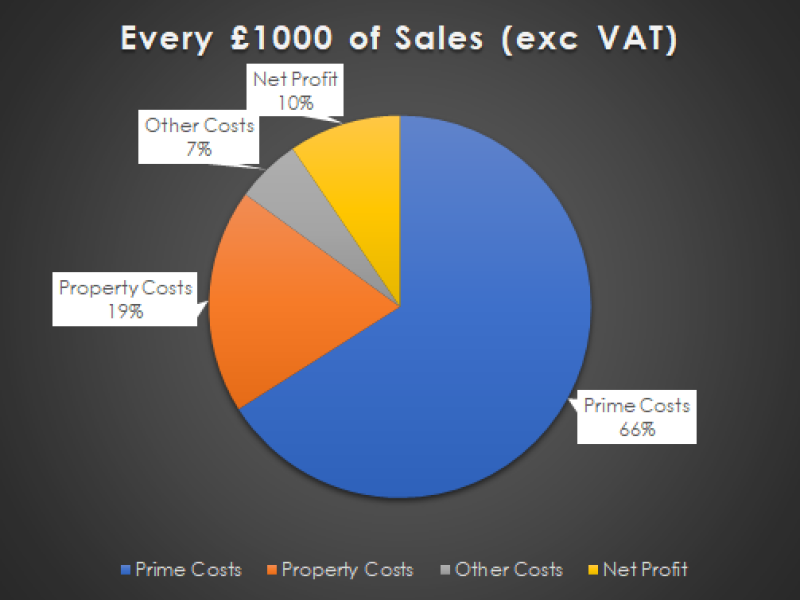Prime costs are an important key performance indicator for your restaurant, which is often overlooked. Prime costs are one of the most important and revealing numbers on any restaurant's P&L. It can give you a much better understanding of your cost structure,
profit potential and how well your restaurant is being managed and is one of the best indicators of restaurant profitability and how well the business is managed on a day-in, day-out basis.
Food costs, beverage costs, and even labour costs all mean little on their own. Yes, they’re important costs to know and manage but they get vastly more useful once you add them up to arrive at prime cost.
What is Prime Cost?
Your prime cost is the total sum of your labour costs of salaried and casual staff and your cost of goods sold (CoGS), including food, alcohol & other beverages, packaging, and other costs; within a specific period such as a weekly and monthly basis.
Calculate Prime Costs as; -
+ Food Cost + Beverage Cost + Salaries & Wages + Payroll Taxes & Benefits = Prime Cost
When calculating your labour costs, you should also include things like:
Health insurance
Bonuses and overtime
Annual leave
Personal leave
Payroll tax
Keep a record of your daily food and beverages purchases on an invoice log worksheet each day and indicate what amounts are chargeable to the appropriate food or beverage account categories.
Individual invoicing
Your suppliers should be able to give you a separate invoice containing just your food items, then a separate invoice for cleaning supplies, paper goods and so on. This will make it much easier to log invoices into the proper accounts without having to manually break down and categorise the invoice line items manually.
Also, most distributors can easily provide invoice subtotals of your food items by meat, seafood, poultry, grocery, etc., if you want this level of detail within your food cost account.
Remember to post credits for any product returns or invoice adjustments and ensure you take note of any cash paid-out transactions for food and beverages purchases as well.
Tracking prime costs regularly is important for restaurants and pubs because it can help address negative impacts on profit. If they are calculated at the end of every week, it's easy to verify them, and when something is out of line, you are able to react quickly, cut your losses and get the problem sorted.
Industry averages suggest prime costs should be between 60% - 67%. In table service restaurants, the generally accepted rule of thumb says that prime cost should run no more than 65 percent of total sales. In quick-service restaurants, the goal is to keep prime cost at 60 percent of total sales or less, due to lower labour costs required. As prime costs depend heavily on achieving a healthy GP%, when running a pub tied to a brewery, you may struggle to keep the prime cost below 67%.
Prime costs are also an excellent way to budget your labour costs. Once you know what GP% you will be achieving, you can deduct your CoGS from the prime cost target to give you the target for labour costs. The pie chart above shows a prime cost target of 66%. If your business achieves a combined GP% of 70% then your CoGS will be 30% (100%-70%). If you then deduct your CoGS from your prime cost target of 66%, this leaves you 36% to spend on total labour costs.
Because of its importance, we suggest that get your accountant or bookkeeper to modify your P&L to show prime cost as its own line item, and make sure they help you monitor this key performance indicator regularly.




No comments:
Post a Comment